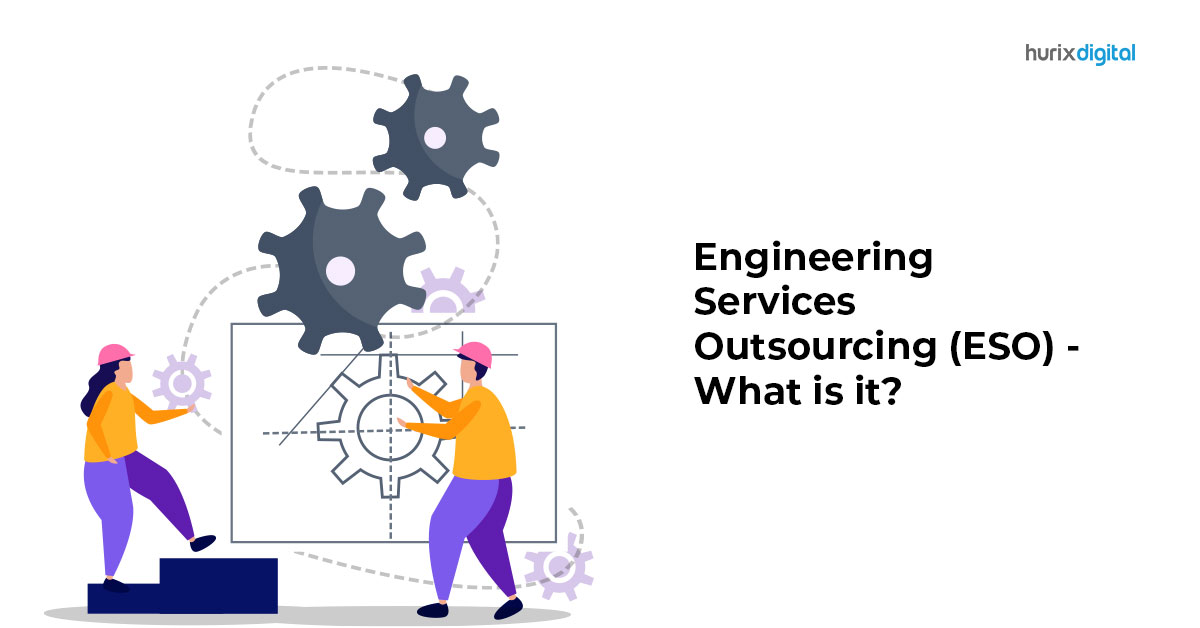
What is Engineering Services Outsourcing (ESO)?
Summary
This is a basic overview of the concept of ESO. It is intended to help you understand the benefits of ESO and how it can help your organization.
Product development of any kind is a complex and resource-intensive process. While developing a product from start to finish in-house may seem like a brilliant idea, the reality is far from it.
Consider the cost of hiring highly skilled experts in every aspect of the product development lifecycle and the time and resources required to learn on the go. When you take these factors into account, it is evident that it is next to impossible to keep up in a cutthroat, volatile, and ever-changing market.
This is where Engineering Services Outsourcing (ESO) comes in, where you outsource specific processes to dedicated professionals while you can focus on your core competencies and business goals.
Table of Contents:
- What is Engineering Services Outsourcing (ESO)?
- What are the Benefits of Employing Engineering Services Outsourcing?
- Engineering Services Outsourcing (ESO): What are the Challenges and How to Address Them?
- Conclusion
What is Engineering Services Outsourcing (ESO)?
Engineering Services Outsourcing (ESO), by definition, is the practice of hiring external sources to work on specific non-physical engineering functions of the product development lifecycle. These can include processes such as design, prototyping, or testing.
ESO is by no means a new concept. It had its roots in the early 2000s when the automobile and aerospace industries outsourced engineering services for the development of telematics, advanced navigation, and infotainment systems to third parties.
Today, however, ESOs are essential to almost every sector of the globe and are expected to grow to USD 8,126.49 billion industry by 2029.
What are the Benefits of Employing Engineering Services Outsourcing?
Outsourced Product Engineering Services today have evolved to become a strategic part of the product development process.
This is because a simple cost vs benefit analysis shows that engineering outsourcing services when judiciously employed, can be of great benefit to both the organization in itself and its clients.
The benefits of ESO are as follows:
1. Companies can Focus on Their Core Competency
The most significant benefit of ESO is that it allows companies to dedicate and pour all their resources into their core competencies or what matters the most. This includes research and development, digital transformation, or focus on expanding their portfolio.
Imagine automobile manufacturers pouring millions into research and development to develop Infotainment systems in-house and trying to compete with industry leaders with decades of experience behind them. It is an exercise in futility.
The added benefit of ESO is the overall improvement in the quality of your product as you are now tapping into the expertise of global engineering talent who have significantly more domain expertise.
2. ESO Presents Significant Cost Benefits
Outsourced product engineering services can help save companies significant sums of capital expenditures. The principle behind this saving is the conversion from fixed costs to variable costs.
When a company outsources its product engineering services, it converts fixed costs into variable costs. This means that the company only pays for the engineering services that it uses, which can lead to significant cost savings.
In addition to this, companies can further cut costs such as overheads and taxes by outsourcing their engineering tasks to low-cost locations. ESO also help companies achieve economies of scale to increase their profitability.
3. ESO Helps Accelerate Time-To-Market
ESO can help companies speed up their product development cycles by reducing the time spent on designing, prototyping, testing, and launching their products.
Engineering services outsourcing companies can perform all of the above tasks a lot fast and more efficiently and to a higher standard when compared to companies trying to do it all themselves.
The sooner a company brings a new product to market, the higher its competitive advantage and ESO excel at helping them do just that.
Engineering Services Outsourcing (ESO): What are the Challenges and How to Address Them?
While there is no doubt that outsourced engineering services offer myriad benefits to organizations, there are a few concerns that you, as a business, must be aware of and address beforehand.
1. Data Security
When you outsource engineering services to a third party, you invariably need to give them access to specific confidential data. Depending on what is being outsourced, this could include client data, trade secrets, or intellectual property.
ESOs could also intentionally or unintentionally expose providers’ sensitive data, such as pricing models, employee details, and performance metrics, to potential theft, loss, and misuse risks.
To address this: It’s good practice to implement robust data security measures such as data encryption, highly regulated access to sensitive data, and backup and recovery systems in place.
In addition to this, Non-Disclosure Agreements (NDAs) and Data Protection Agreements (DPAs) should also be a part of the outsourcing contract.
Also Read: Importance of Data Security in Higher Ed Institutions for Data Protection
2. Protecting Intellectual Property Rights
When employing the services of engineering services outsourcing companies, disagreements or conflicts could arise over the ownership, usage, and protection of intellectual property rights (IPR), such as patents, trademarks, and copyrights.
Royalties and revenue sharing of IPR could also be a point of contention.
To address this: Ensure you have IPR agreements in place that specify IPR ownership, licensing, and the intricacies of royalty and revenue sharing before starting any project.
3. Communication Barriers and Cultural Differences
One of the main challenges of engineering services outsourcing (ESO) is that most of it is done offshore to maximize cost benefits. This means that clients and providers are often located in different countries or continents, which can create communication and cultural barriers.
The lack of face-to-face interaction coupled with varying accents, differences in time zones, and work culture can lead to miscommunication and increase the possibility of misaligning common project milestones.
To address this: Establish effective communication channels to facilitate regular communication, feedback, and collaboration. Respect and appreciate their cultural differences and similarities.
Collaboration without face-to-face interaction can be difficult; encourage all parties involved to listen actively, maintain a positive and assertive attitude, and be empathetic to one another.
Also Read: 5 Industries That Will Drive Virtual Reality in Corporate Training
Conclusion
Engineering Services Outsourcing (ESO) is a powerful solution you should capitalize on to gain a competitive edge in the market. They help companies gain access to the latest technologies, tools, and methodologies at a fraction of the cost.
That said, ESO is not a one-size-fits-all approach, and careful assessment must be done before deciding which engineering services to outsource and which service provider to partner with.
If you are looking for a reliable and experienced partner to outsource your engineering services, look no further than Hurix Digital. We are industry leaders in digital engineering and technology solutions.
We can help accelerate your product development process with top-notch quality and have an extensive track record of successful projects delivered for clients across various industries, such as automotive, aerospace, industrial, consumer electronics, medical devices, and more.
Contact us today to learn how they can help you achieve your product development goals.

SVP & Head – Hurix Technology Solutions
Global Delivery head with 25 years of working experience in NYC investment banks and fintech companies. Hands-on technology delivery management and program management, accountable for stakeholder relationships, Strategic roadmap, P&L, Revenue growth, Account Management, and employee satisfaction.



